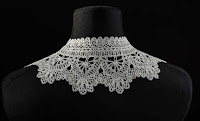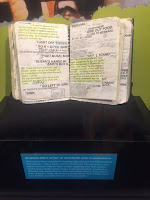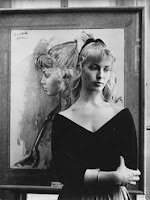Design Museum

Newly opened Design Museum on High Street Kensington which has moved from the banks of the Thames in Bermondsey. The new building is a reworking and a refurbishment of the old Commonwealth Institute which I remember visiting as a child and the architect John Pawson has retained the iconic curved concrete roof which dominated the internal space as well as being beautiful from the outside. I loved the big space in the middle of the museum and the lovely inclusion of benches on the main staircase giving people a place to sit plus hopefully a space for talks and discussions. The pale wood used throughout is beautiful. The two spaces for special exhibitions are lovely. I liked the way the one on the ground floor wraps round the back of that floor and the one in the basement has lovely tall ceilings and I look forward to the imaginative way in which it could be used. However it is a shame that the permanent collections feels quite cramped on just one side of the top floor. ...
























